White House pauses Navy’s F/A-XX next-gen aircraft. Is this the way forward?
- By Alex Hollings
Share This Article
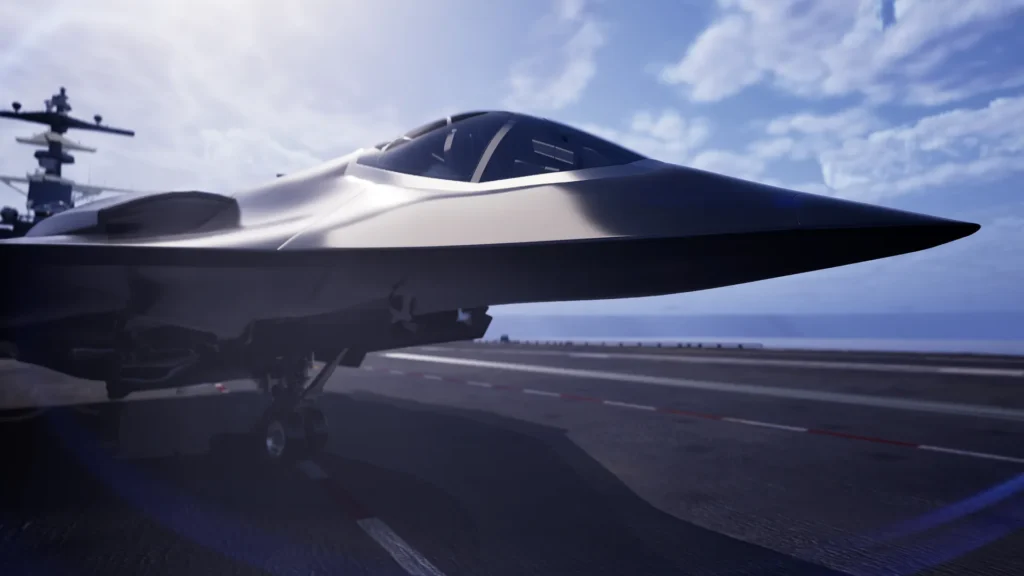
In March 2025, the U.S. Air Force awarded Boeing the contract to build America’s next new stealth fighter, the F-47. For many, this was a welcome announcement, as the 6th generation fighter effort had been sitting on hold for 10 months.
But during those 10 months, concerns about America falling behind in the airpower arena were largely blunted thanks to another advanced new fighter program working its way toward service – one that drew its design inspiration from the same classified X-Plane program as the Air Force’s effort, but that was tailored to a more multi-role mission set and the rigors of flight operations aboard an aircraft carrier: the Navy’s F/A-XX.
In the minds of some, the F/A-XX effort was arguably the more strategically important of these two 6th generation fighter programs. China’s rapidly expanding navy and globe-leading stockpile of long-range anti-ship missiles have long placed America’s carrier strike groups at a potential disadvantage. Notably, American carriers are now unable to launch fighters against Chinese targets without first sailing into range of weapons like China’s nuclear-capable hypersonic anti-ship glide vehicle, DF-ZF.
A new carrier-based fighter with improved stealth to survive in contested airspace, the ability to coordinate constellations of AI-enabled drone wingmen, enough room to carry larger payloads, and, most important of all, a big boost in fuel range would provide the Navy’s 11 aircraft carriers with the means to play a vital role in deterring a conflict with China, or failing that, in winning one.
But now, the White House is saying that America can only effectively manage one new high-end fighter program at a time and is shelving the Navy’s F/A-XX effort indefinitely to focus solely on the Air Force’s F-47… And the Navy is not very happy with this decision.
New fighter designs don’t just iterate on the fighters that came before them; rather, they serve as a response to the fighters (and other threats) that came after their predecessors. They take years and lots of money to get into service, so work on them needs to start way before the jets they’ll replace are worn out, and they need to bring new advantages to bear to make sure they can keep winning.
It was all the way back in 2008, just seven years after the Super Hornet first entered service, that the U.S. Navy started discussing its long-term need to field a replacement for its newest carrier fighter, and its sister jet, the electronic-warfare focused E/A-18G Growler. And this is the first misconception about the F/A-XX that we need to dispel: this new fighter is not replacing the F-35C on American flattops. The Navy operates two different types of fighters from its carriers, the F/A-18 Super Hornet and the F-35C, with the F/A-XX slated to replace the retiring Super Hornets sometime in the 2030s to then fly alongside the F-35 for decades to come.
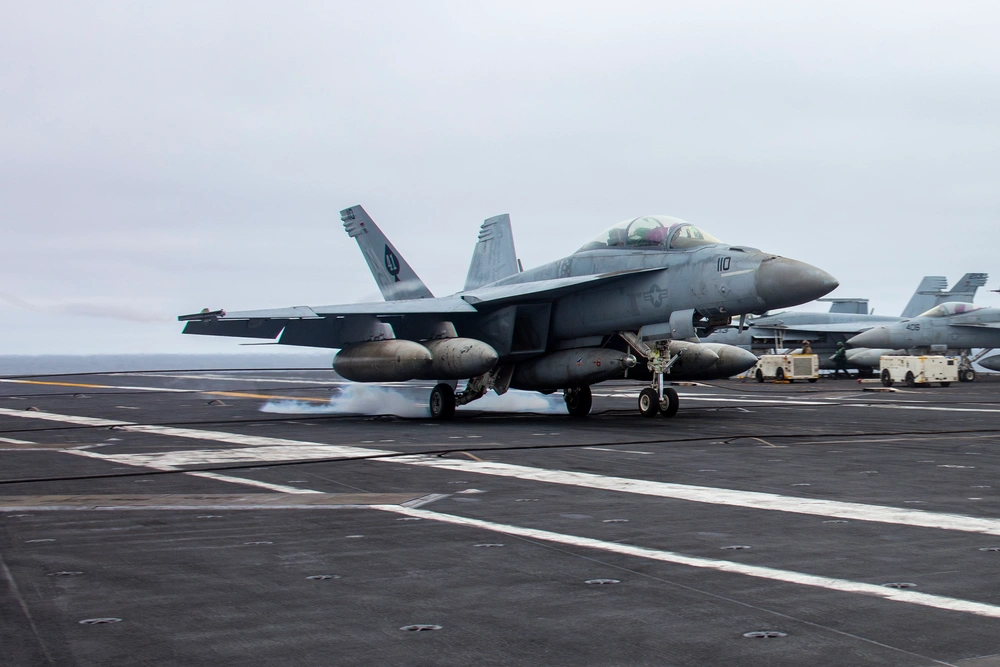
It wasn’t until 2012 that the Navy’s pursuit of a new carrier fighter started to get serious, with the branch issuing a Request for Information (RFI) to industry partners about an entirely new jet. According to that RFI, the Navy was looking for a new “carrier-based aircraft to provide air supremacy with a multi-role strike capability in an anti-access/area denied (A2AD) operational environment.”
The RFI lists this new fighter’s primary missions as “air warfare (AW), strike warfare (STW), surface warfare (SUW), and close air support (CAS).” Yet, it went on to highlight additional needs including persistent operations inside the reach of enemy air defense systems, airborne electronic attack (or electronic warfare), air-to-air refueling, and tactical reconnaissance. But maybe most notable of all, this RFI also said this new fighter could be optionally or entirely unmanned.
Two years later, then undersecretary of defense for acquisition, technology, and logistics, Frank Kendall, commissioned a classified DARPA study into new fighter technologies called, “The Dominance Initiative.” This study would dramatically shift America’s vision for its next generation of fighters. Rather than focusing on designing and fielding a single new aircraft for aircraft carriers (or for air superiority in the Air Force’s case), the study recommended developing a “family of systems,” with each crewed fighter accompanied by AI-enabled drone wingmen, all of which could leverage data from a variety of new sensors and engage targets with a variety of new networked weapons. This study then directly led to a classified billion-dollar X-Plane program called “Next Generation Air Dominance,” (NGAD) which ultimately produced two flying technology demonstrators.
That X-Plane program, which drew funding from DARPA, the Air Force and the Navy, became the basis for separate but parallel new fighter programs being developed for each branch. But, rather than being two entirely different aircraft, both efforts seemed to mature under the expectation that, while the airframes and their manufacturers might not be the same, a fair portion of the modular subsystems in these new jets would be shared across platforms. This would allow both branches to avoid the expensive process of trying to create one new fighter design that could meet their very different needs, while still saving on the development of things like avionics, AI-flight control systems, and more.
The Air Force needed a new air superiority fighter to replace its endangered fleet of F-22 Raptors, which may still be highly capable, but are too old and too few to rely on alone in a high-end fight with a nation like China. But for the Navy, this new fighter effort was never just about adding new capabilities to carrier air wings alone. In a real way, it was about keeping America’s aircraft carriers relevant in a 21st-century fight.
Related: The F-22 Raptor will get a ‘super’ upgrade, says President Trump

China’s anti-access/area denial strategy includes the strategic placement of several different kinds of long-range anti-ship weapons like the DF-21D “carrier killer” medium-range ballistic missile, the DF-ZF, and the YJ-21 medium-range anti-ship missile. All of these weapons have publicly claimed ranges of more than 930 miles, with some reaching further than 1,200 – and that is a big problem for the U.S. Navy.
American carrier strike groups are America’s most potent form of force projection, with immense firepower on hand. A great deal of that power comes directly from the carrier air wing’s strike fighters, which usually include around 34 F/A-18 Super Hornets and 10 F-35Cs, along with another five to seven EA-18G Growlers. These fighters have a shorter combat radius than the maximum reach of China’s anti-ship weapons, meaning the Navy cannot launch combat sorties against China with its current aircraft without putting its multi-billion-dollar super carriers at risk of being sunk.
The Navy has been fielding a variety of new interceptors and other means of bringing down these carrier-killing missiles, but it’s important to understand that no air defense is impenetrable, and all air defense systems have what’s known as a “saturation point,” or the point in which you simply don’t have enough interceptors to bring down all of the incoming threats. Launching that many missiles at once would be expensive and difficult for China, as would actually targeting a moving carrier at sea from over 1,000 miles. However, successfully sinking a $13 billion aircraft carrier with 70 aircraft and more than 4,500 crew onboard would certainly be worthwhile for China – and both China and the United States know that.
In fact, war games carried out by both the Pentagon and the Center for Strategic and International Studies (CSIS) simulating an American defense against a Chinese invasion of Taiwan repeatedly saw the U.S. Navy losing aircraft carriers as the fighting played out. The Navy would lose often two, but sometimes as many as four aircraft carriers depending on the decisions made throughout the war games. In most of the 24 separate iterations of this conflict played out by the CSIS team, America lost both of its forward-deployed aircraft carriers in the Pacific within just the first few turns. Notably, the United States did still come out on top in all but the most extreme iterations of these war games, but with losses that staggering, it’s still tough to call that a win.
The Navy’s F/A-XX fighter would have a combat radius at least 25% more than today’s F-35C, which would mean a minimum combat radius of around 960 miles, or a bit better than many of China’s anti-ship weapons. This increase in range, combined with stand-off munitions that can cover hundreds of miles and the Navy’s new MQ-25 Stingray refueling drones, would make it entirely feasible for carrier strike groups to launch combat sorties against Chinese anti-ship and anti-air defensive systems as well as coastal command and control assets effectively puncturing a hole in that anti-access/area denial strategy in order to sail closer and bring their F-35s to bear.
Like the Air Force, the Navy turned to America’s three prime fighter contractors, Lockheed Martin, Boeing, and Northrop Grumman for the F/A-XX.
In March 2025, Lockheed Martin was eliminated from the competition. Just 17 days later, Lockheed would get more bad news when the Air Force announced that Boeing won the contract to build the F-47. Rumors swirled that a Navy decision could follow closely behind… But then, something changed behind closed doors at the White House.
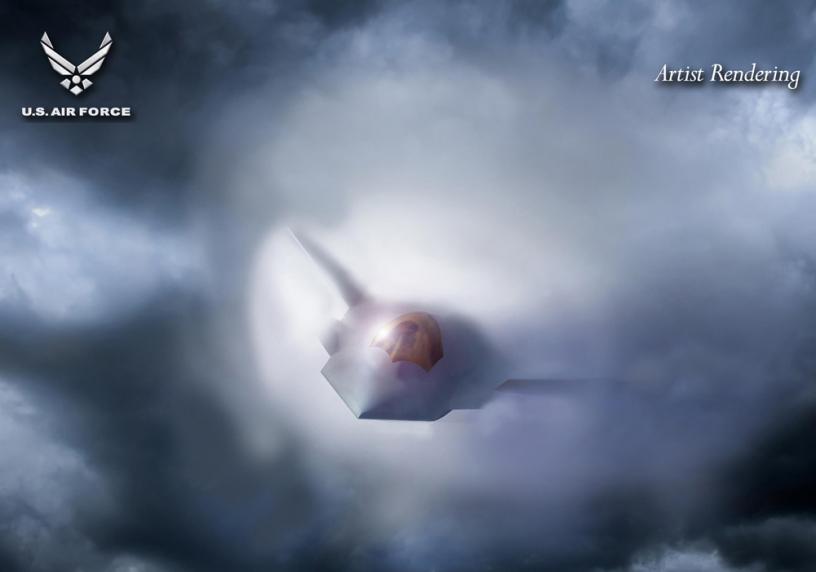
Originally, the plan was to field the Air Force’s new fighter in the early to mid-2030s, and the Navy’s new fighter shortly thereafter. This would allowi the F/A-XX to arrive in sufficient numbers by the end of the 2030s to replace the earliest-delivered Super Hornets that would likely be reaching the end of their service lives by then.
But then, in June, the Trump administration’s proposed fiscal year 2026 Defense budget arrived. It included $3.5 billion for continued work on the Air Force’s new F-47, and it slashed the Navy’s F/A-XX budget by a whopping 84% year over year, cutting it down to just $74 million to finalize designs and effectively just keep the program alive, though on life support. According to multiple news outlets, this decision was made at the highest levels of the Pentagon due to concerns that America’s industrial base couldn’t handle building two high-end fighters at the same time, and as one unnamed Pentagon official put it, “the presidential priority” was “to go all-in on F-47.”
This concern was later echoed by newly appointed Secretary of the Navy John Phelan, who cited the Navy’s ongoing shipbuilding woes as a driver behind the decision.
“All of our programs are a mess, to be honest. Our best-performing [program] is six months late and 57% over budget,” he told the House Armed Services Committee on June 11.
Yet, it was clear that, while Phelan and Defense Secretary Pete Hegseth believed the F/A-XX program should be postponed, the Navy’s military leadership was not as convinced.
That same day, Chief of Naval Operations Adm. James Kilby didn’t openly disagree with the branch’s civilian leaders, but he did emphasize the importance of the program, highlighting that it’s the threat environment, not budget debates, that dictate what the force needs to win.
“I believe the sixth-generation fighter is necessary for the Navy, just as it is for the Air Force. The thing that drives that necessity is the threat… It’s important to continue onward here because, I think, China is not slowing down, and we shouldn’t slow down either,” Kilby said.
The admiral raises a good point: Not only is China working toward fielding the J-35 – its second 5th-generation stealth fighter for both air force and navy carrier duty – but it also currently has at least two even more modern fighters in development. These aircraft, generally known as the Chengdu J-36 and Shenyang J-50, have been spotted conducting test flights over China since December 2024.
Related: What do we know about China’s new ‘6th gen’ fighters?
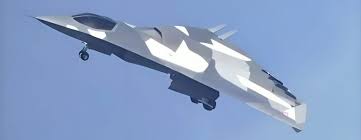
Real confirmation that the Navy brass was not happy with the decision to gut the F/A-XX program came about one month later when the Navy released its annual “Unfunded Priorities List,” which effectively amounts to a wishlist for programs the Navy currently can’t fund but would like to. Right at the top of that list was $1.4 billion for continued work on the F/A-XX fighter, clearly suggesting that the Navy believes America’s fighter industrial base could manage development on both Air Force and Navy fighters at the same time.
“This additional funding will enable Navy to award the 6th Generation Strike Fighter contract to industry. [The] Navy’s 6th Generation Strike Fighter aircraft is a critical component of both the future Carrier Strike Group (CSG) and the air wing of the future,” the Navy said about its request.
The Navy brass aren’t alone. Boeing Defense and Space CEO Steve Parker directly contradicted concerns about the industrial base in a press conference held on June 16. Parker claimed that Boeing had the engineering and production capacity to design, build, and field both new fighters if they managed to win the Navy’s contract. The firm has invested some $5 billion into expanding its production facilities in recent years with that possibility in mind.
“Our strategy was to be able to do both, win both, and execute both. So yeah, absolutely, we can do it. And so can the industrial base, and so can the engine manufacturers. So I don’t see that as being an issue,” Parker said.
It is important to keep in mind that Boeing is still pursuing the Navy contract, so Parker has a financial interest in what he said. But disagreement with the decision to postpone the F/A-XX started coming from more quarters.
Earlier this month, the House Appropriations defense subcommittee released its budget markup which seeks to bring funding back to the F/A-XX effort, with an additional $972 million earmarked for the jet’s development. In response, however, the White House released a Statement of Administration Policy that swiped back at the budget boost.
“The Administration appreciates the Committee’s commitment to fielding timely sixth generation fighter aircraft. However, the Administration strongly supports reevaluating the F/A-XX program due to industrial base concerns of two sixth-generation programs occurring simultaneously. Awarding the F/A-XX contract as written is likely to delay the higher-priority F-47 program, with low likelihood of improving the timeline to field a Navy sixth generation fighter,” it said.
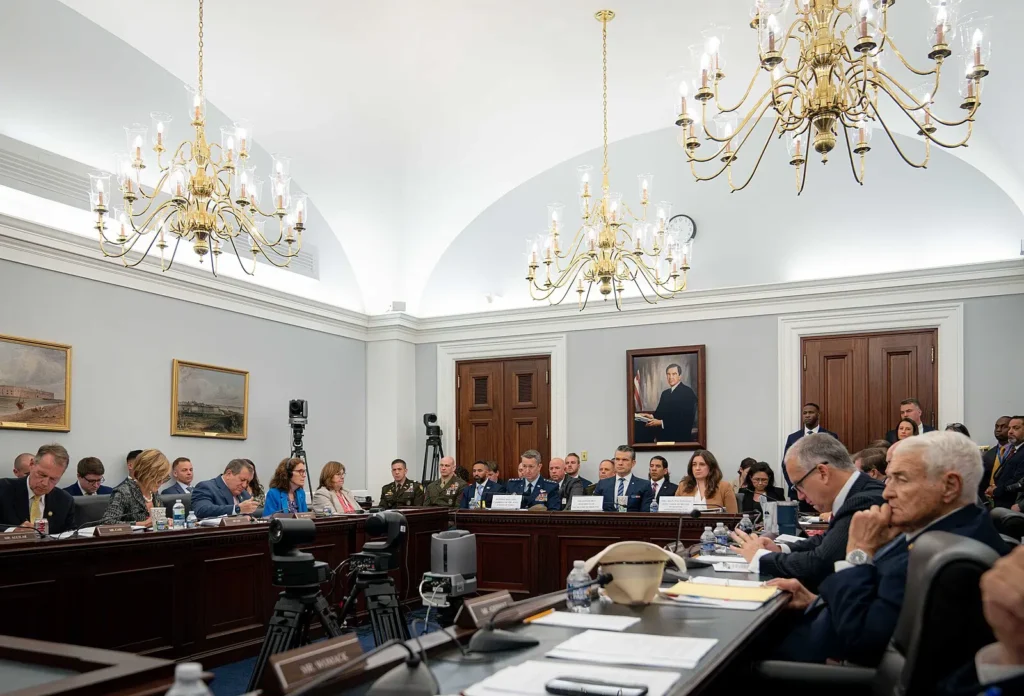
And that’s where the F/A-XX program stands for now, caught in limbo between the Navy’s leadership and a growing contingent of lawmakers who want it funded on the one hand, and the White House’s concerns over the defense industrial base on the other.
It’s hard to tell which side is right. On the one hand, the Navy needs the F/A-XX program to move forward much sooner than later, otherwise the United States runs the risk of having its aircraft carriers rendered useless or destroyed in a fight with China.
But, on the other, Navy acquisitions are clearly struggling, and while shipbuilding is not the same as building new fighter jets, even America’s massive military expenditures do have limits. It seems unlikely to us that funding the F/A-XX could delay work on the F-47 (as long as the Pentagon doesn’t pull funds from one to pay for the other), but it is still possible that developing both jets at once could lead to redundant efforts and wasted money. Building the F-47 first could allow the F/A-XX program to leverage lessons learned from it to speed up the process, once it actually begins anyway.
Ultimately, the question of funding F/A-XX today or not comes down to the question of when and if you believe the United States could find itself in a fight with China. Postponing the F/A-XX effort is betting that a war with China won’t happen anytime in the next 10 to 15 years at minimum. It means believing that America has time to complete two full fighter development cycles and get them both into service before such a fight breaks out.
Conversely, funding F/A-XX today means betting that Boeing and potentially Northrop Grumman, along with the long list of suppliers under their umbrellas, have the engineering, logistical, and industrial capacity to simultaneously develop and build two groundbreaking new jets at the same time without significant enough delays or cost overruns to sideline either program. It will almost certainly cost more to develop both jets at once, but if war were to come at any point in the 2030s, that added cost would arguably be well worth it.
Feature Image: Newly released F/A-XX render. (Northrop Grumman)
Read more from Sandboxx News
- The U‑2 spy plane just made history again by breaking two more records
- Serbia’s unique Zastava M21 – Service rifles from around the world
- 7 strategies to stay positive in your military (or in any) career
- Big tech is trying to hack shipbuilding for the Navy. Will it succeed?
- Northrop Grumman’s Stand-in Attack Weapon aims to penetrate anti-access/area denial zones
Related Posts
Sandboxx News Merch
-

‘AirPower’ Classic Hoodie
$46.00 – $48.00Price range: $46.00 through $48.00 Select options This product has multiple variants. The options may be chosen on the product page -

‘Kinetic Diplomacy’ Bumper Sticker (Black)
$8.00 Add to cart -

‘Sandboxx News’ Trucker Cap
$27.00 Select options This product has multiple variants. The options may be chosen on the product page

Alex Hollings
Alex Hollings is a writer, dad, and Marine veteran.
Related to: Airpower, Military Affairs

How US Special Forces took on Wagner Group mercenaries in an intense 4-hour battle
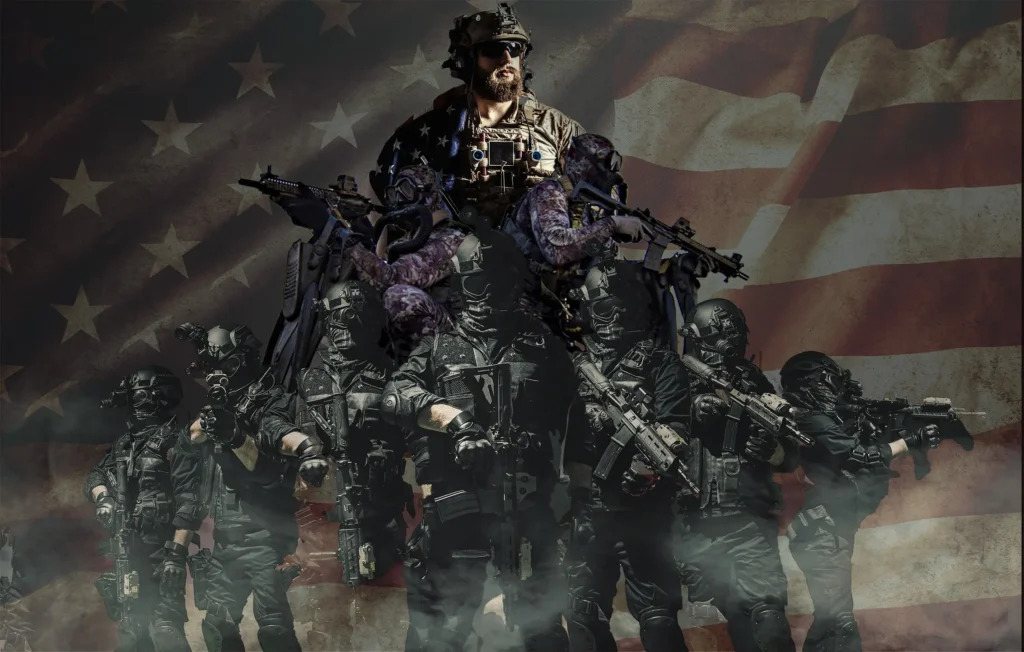
The social hierarchy of US special operations units
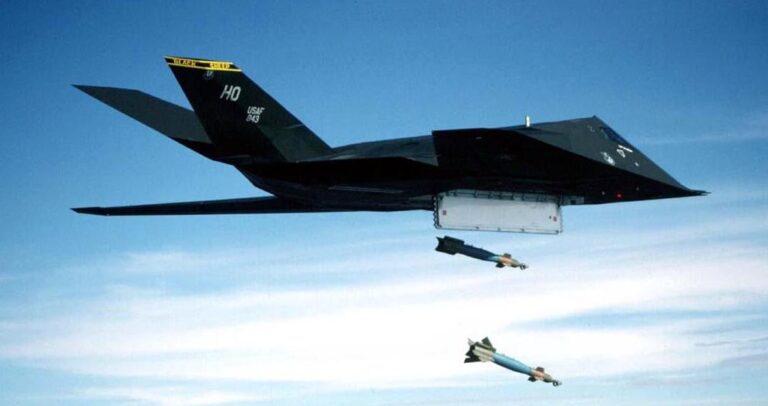
It took more than stealth to make the F-117 Nighthawk a combat legend
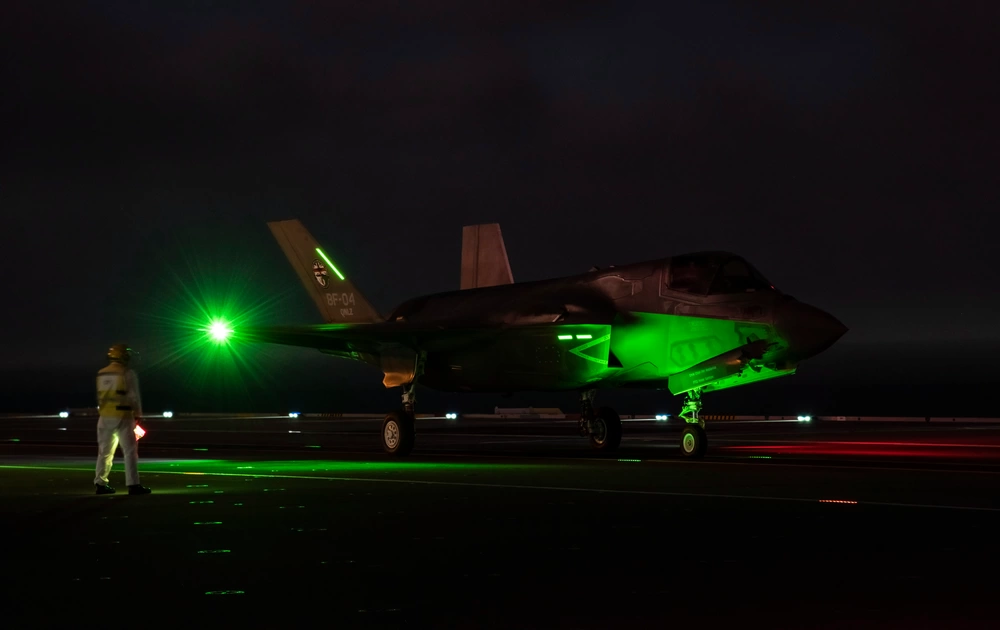
New material from North Carolina State University could revolutionize stealth aircraft (and even warship) design
Sandboxx News
-

‘Sandboxx News’ Trucker Cap
$27.00 Select options This product has multiple variants. The options may be chosen on the product page -

‘AirPower’ Classic Hoodie
$46.00 – $48.00Price range: $46.00 through $48.00 Select options This product has multiple variants. The options may be chosen on the product page -

‘AirPower’ Golf Rope Hat
$31.00 Select options This product has multiple variants. The options may be chosen on the product page -

‘Sandboxx News’ Dad Hat
$27.00 Select options This product has multiple variants. The options may be chosen on the product page
